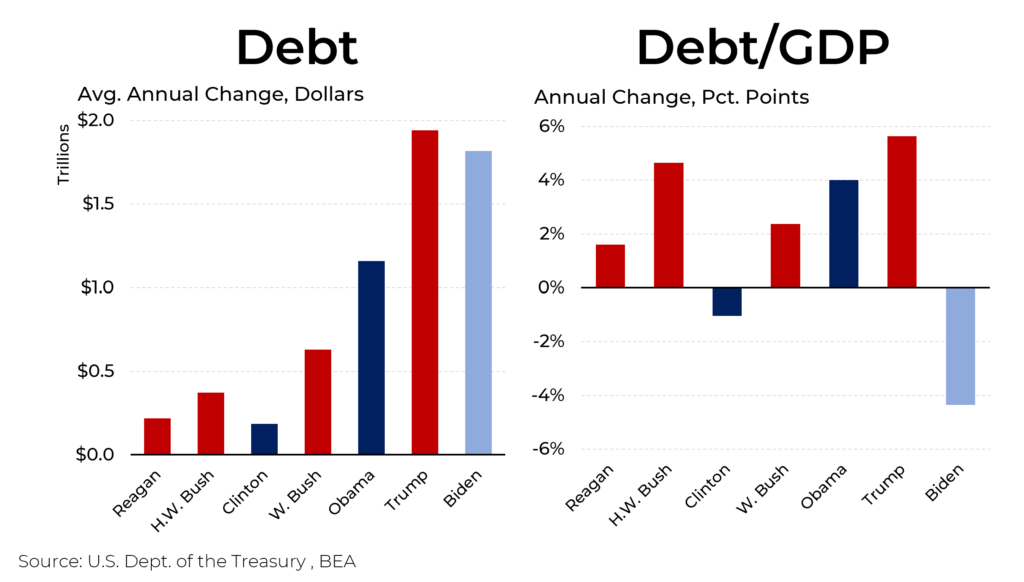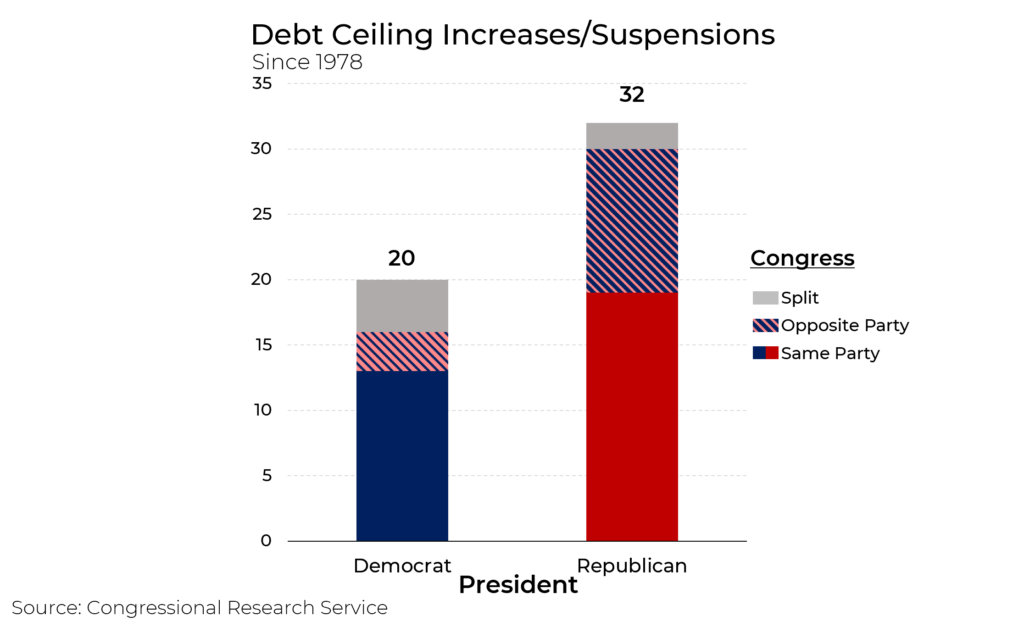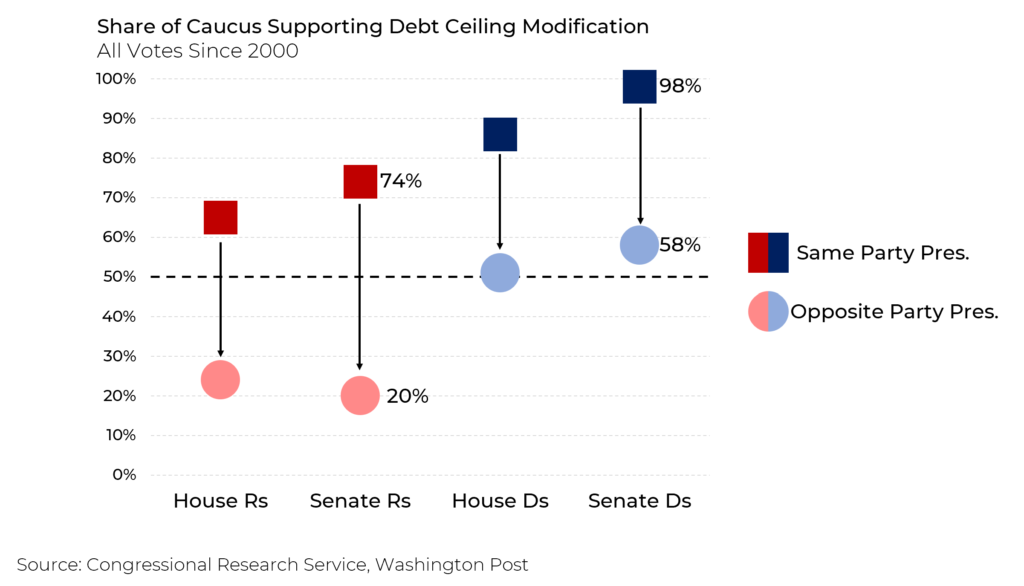House Republicans have declared themselves ready to take a stand against the federal government incurring more debt, borrowings that are used to finance the large deficits that Washington incurs every year. But raising the limit on borrowing – known as the “debt ceiling” – has been regular occurrence for many decades, regardless of which party held the White House.
It’s an unfortunate fact that the federal government has been adding to the nation’s debt at an exceptional rate in recent years. Some of that has been the cost of addressing the global financial crisis that began in 2008. Some of that has been the also large cost of responding to the impact of Covid, when the pandemic struck in 2020. But some of it has also been the willingness of both parties to spend more money without raising taxes to pay for those outlays.
Indeed, President Biden has been adding to the debt at a marginally slower pace ($1.8 trillion per year) than Donald Trump did during his administration. Indeed, Trump nearly doubled the deficit, from $585 billion to nearly $1 trillion, before Covid hit.
An important measure of the nation’s fiscal health is the amount of debt outstanding relative to the size of the economy (the debt-to-GDP ratio). By this measure, Biden has been the first president since Bill Clinton to improve our fiscal position.
Since 1978, the debt ceiling has been raised or suspended 52 times: 20 times by Democrats and 32 times by Republicans. The most increases (19) occurred during the presidency of a Republican, Ronald Reagan. Twenty increases occurred when control of Congress was either partially or completely in the hands of the opposition party.
While many past debt ceiling increases have been controversial and some have gone to the brink of default (notably, in 2011), in the end, the debt ceiling has always been raised before the nation defaulted on its debt or other obligations. In achieving those resolutions, the Democrats have been far more cooperative than the Republicans. Even when the presidency has been held by a Republican, a majority of both House and Senate Democrats have, on average, voted to raise or suspended the ceiling. In contrast, when a Democrat has been in the White House, fewer than a quarter of Republicans on Capitol Hill have, on average, voted to raise the ceiling.








